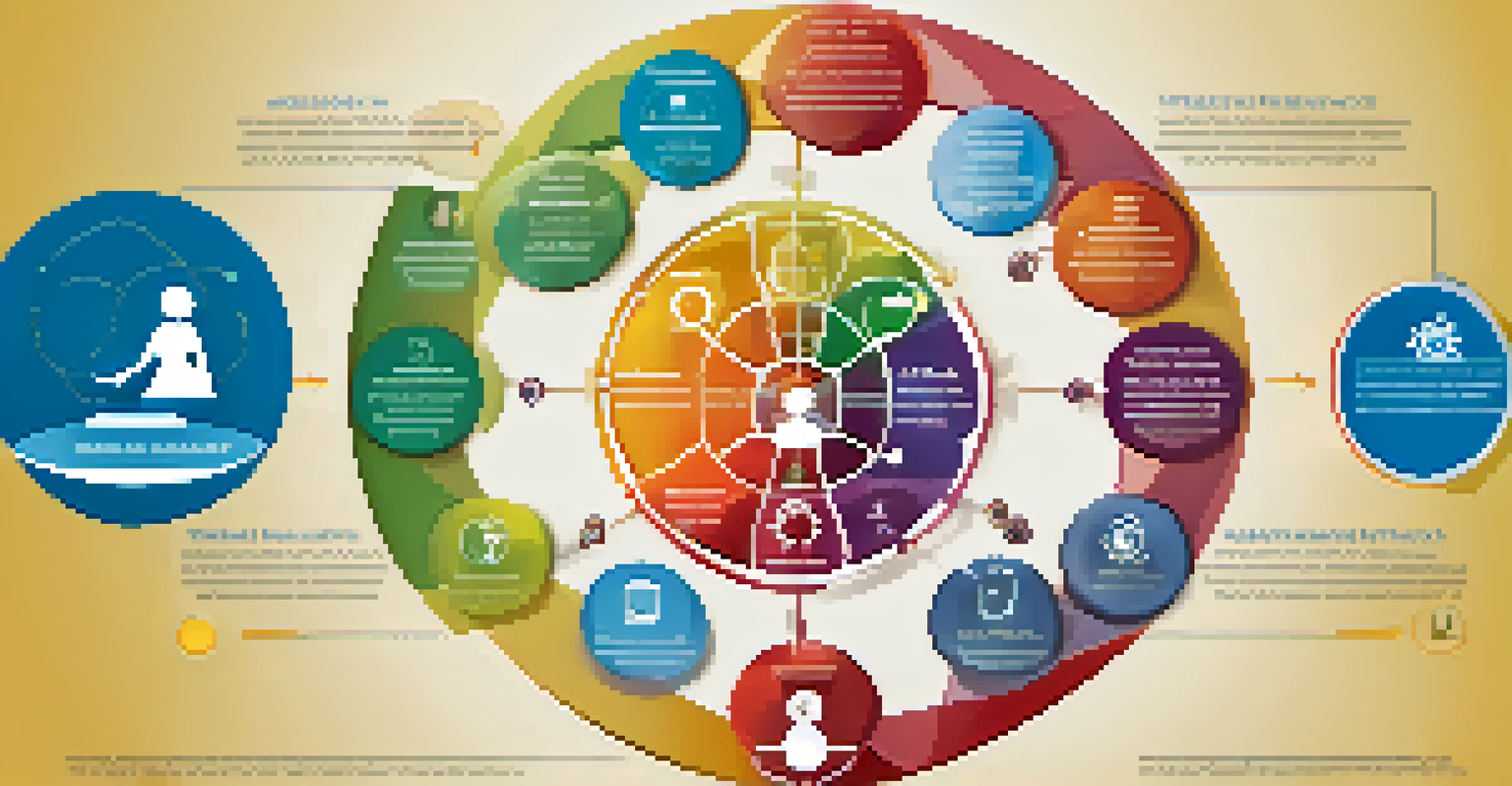Teaching Strategies that Support Cognitive Development in Class

Understanding Cognitive Development in the Classroom
Cognitive development refers to the progression of learning and thinking skills that students undergo as they grow. In the classroom, recognizing where each student is in this journey helps tailor teaching strategies to suit their needs. By understanding cognitive development, educators can create an environment that nurtures critical thinking and problem-solving skills.
Tell me and I forget. Teach me and I remember. Involve me and I learn.
For instance, younger students may thrive on hands-on activities that engage their senses, while older students benefit from discussions that challenge their reasoning. This differentiation ensures that every student feels valued and capable, fostering a positive learning atmosphere. Ultimately, a deep understanding of cognitive development allows teachers to guide their students more effectively.
Moreover, incorporating different learning theories, like Piaget's stages of cognitive development, can offer valuable insights. By aligning teaching methods with these stages, educators can ensure that lessons resonate with their students, promoting deeper understanding and retention of knowledge.
Active Learning Techniques to Boost Engagement
Active learning is a teaching approach that encourages students to engage directly with the material. This can include group discussions, problem-solving sessions, or hands-on projects, all aimed at making students active participants in their education. When students are actively involved, they are more likely to retain information and develop critical thinking skills.

For example, instead of a traditional lecture, a teacher might facilitate a debate on a relevant topic. This method not only enhances comprehension but also allows students to express their opinions and consider different perspectives. Such engagement fosters a sense of ownership over their learning process, making education feel more relevant.
Understanding Cognitive Development
Recognizing where each student is in their cognitive development allows educators to tailor teaching strategies that nurture critical thinking and problem-solving skills.
Additionally, incorporating technology can enhance active learning. Tools like interactive quizzes or collaborative platforms can provide real-time feedback, allowing students to learn from mistakes and improve immediately. This approach cultivates a dynamic classroom environment where students feel empowered to explore and inquire.
Using Scaffolding to Support Learning Progress
Scaffolding is an instructional technique that involves providing temporary support to students as they learn new concepts. This support can take many forms, such as guided practice, hints, or resources tailored to their skill level. The goal is to gradually remove this support as students gain confidence and independence in their abilities.
The mind is not a vessel to be filled, but a fire to be kindled.
For instance, a teacher might start a new math unit by demonstrating a problem step-by-step. As students become more comfortable, the teacher can gradually reduce assistance, encouraging them to tackle similar problems on their own. This method not only builds competence but also boosts students' self-esteem.
Moreover, scaffolding helps address diverse learning needs within the classroom. By providing different levels of support, educators can ensure that all students—regardless of their starting point—have the opportunity to succeed. This inclusive approach fosters a more equitable learning environment.
Encouraging Collaboration for Social Learning
Collaboration in the classroom is a powerful way to enhance cognitive development. When students work together on projects or tasks, they share ideas, challenge each other's thinking, and develop social skills. This interactive approach not only deepens understanding but also prepares students for real-world scenarios where teamwork is essential.
For instance, group projects can ignite creativity as students brainstorm solutions together. This cooperative learning model encourages students to communicate effectively and respect differing viewpoints, enriching their overall educational experience. It also instills a sense of community, making learning more enjoyable.
Active Learning Enhances Engagement
Active learning techniques, such as group discussions and hands-on projects, encourage student participation, leading to better retention and critical thinking.
Incorporating peer feedback into collaborative activities can further enhance cognitive skills. As students critique each other’s work, they learn to evaluate their own understanding and identify areas for improvement. This reciprocal learning process not only solidifies knowledge but also fosters critical thinking.
Incorporating Multiple Intelligences in Teaching
The theory of multiple intelligences, proposed by Howard Gardner, suggests that individuals have different types of intelligences that influence how they learn. By incorporating this theory into teaching strategies, educators can cater to diverse learning styles. This ensures that all students have the opportunity to succeed by tapping into their unique strengths.
For example, a lesson on ecosystems could include visual aids for visual learners, discussions for linguistic learners, and hands-on experiments for kinesthetic learners. This varied approach keeps students engaged and allows them to connect with the material in ways that resonate with them personally. Ultimately, it promotes a more inclusive and effective learning environment.
Moreover, recognizing and valuing these intelligences can boost students' confidence. When students see that their talents and skills are acknowledged, they are more likely to take risks in their learning. This empowerment is crucial for cognitive development, as it encourages exploration and a love of learning.
Utilizing Feedback for Continuous Improvement
Feedback is a critical component of the learning process. It provides students with insights into their performance, helping them understand what they did well and where they can improve. Regular feedback not only guides students in their learning journey but also fosters a growth mindset, encouraging them to embrace challenges.
For example, a teacher might use formative assessments, such as quizzes or reflections, to gauge student understanding. By providing timely feedback, students can adjust their study strategies and focus on areas that need more attention. This ongoing dialogue between teacher and student is vital for cognitive growth.
Creating Inclusive Learning Spaces
A safe and inclusive classroom environment promotes respect and engagement, empowering students to take risks and explore their learning potential.
Additionally, fostering a culture of peer feedback can enhance learning outcomes. When students evaluate each other's work, they gain new perspectives and develop critical thinking skills. This collaborative feedback loop not only reinforces understanding but also builds a sense of community within the classroom.
Creating a Safe and Inclusive Learning Environment
A safe and inclusive classroom environment is essential for cognitive development. When students feel respected and valued, they are more likely to take risks and engage fully in their learning. This nurturing atmosphere encourages curiosity and exploration, leading to deeper understanding and retention of knowledge.
For instance, setting clear expectations for behavior and fostering open communication can help create a respectful space. Additionally, incorporating diverse perspectives into the curriculum ensures that all students see themselves reflected in what they learn. This inclusivity not only enriches discussions but also empowers students.

Moreover, addressing social-emotional needs is crucial. Activities that promote emotional intelligence, such as mindfulness exercises or group discussions about feelings, can greatly enhance students' ability to focus and engage. By prioritizing emotional well-being, educators lay the groundwork for effective cognitive development.